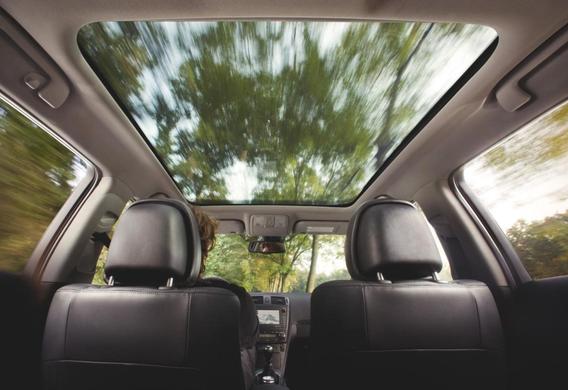
History of panoramic roofs
The idea of using glass for the roof of a car appeared in the minds of designers in the middle of the 20th century. It was at this time that the unbreakable glass of the "triplex" was invented, which made it possible to try to implement it. The first instance of cars with a panoramic roof is Lincoln XL-500 '53 and the Buick Century' 56. However, these models remained concepts.
In 2002, 307 SW became the first vehicle on which transparent panoramic roofs became an integral part of the structure, proved that the glass had become the same as a design material such as steel or plastic.
Today, the number of car companies installing a transparent roof on their cars has increased markedly. These include: Lexus, BMW, Hyndai, Nissan, Ford, Mitsubishi, Mazda and others.
Varieties
There are three types of panoramic roofs. In the first case, the roof is a continuation of the windscreen. The second-between the windscreen and the roof glass is the bulkhead of the body. It's called a panoramic hatch. The third variant is characterized by the absence of a partition, while the roof and glass are not monolithic structures-they are separated by a gasket.
Technical considerations
The panoramic roof is an advanced triplex. This glass is usually five layers. The top and bottom of this "sandwich" is a special automotive glass, which is responsible for optical clarity of the image and has a complex form of convex lenses. Inside there are two layers of plastic adhesive polymer and tonic film between them. If the glass breaks, the polymers, thanks to their properties, do not give the shrapnel to separate from the film. The thickness of the glass pane is about 8 mm. The properties of the splitter polymer can be used to improve the insulating noise of the passenger compartment. In addition, the whole structure has low thermal conductivity. This is why the interior of the passenger compartment is heated or cooled in accordance with the temperature inside the passenger compartment. Outside, the temperature of the stele depends on the temperature of the air. This feature allows the panoramic roof not to warm up.
A motor vehicle with a panoramic roof is usually equipped with a stork, the position of which can be adjusted thanks to the electric power transmission by pressing the button.
Most of the modifications to panoramic roofs assume the presence of a manhole construction. It may be inserted into any type of glass roofs. The opening of the hatch is also thanks to the electric power train.
Advantage and disadvantages
Of course, the panoramic roof has merit in an aesthetic plan. First of all, it looks like this roof is impressive, especially from the inside. In this case, it is not possible to distinguish it from the outside of the car, nor to distinguish it from the ordinary-if the body of the car is dark, the glass at the expense of the tonnage of the car will be fitted to the body. The glass roof gives a visual boost to the cabin. This is, however, more relevant for the passengers seated at the rear. The driver and the front passenger will have to raise their heads to see the sky.
There's a roof and some functional advantages. The manufacturers claim that the panoramic roof could be more solid than usual at the expense of materials of the design. If this advantage leaves some doubt, the absence of noise in the saloon in the rain is an obvious fact.
Of course, like any innovative technology, panoramic roofs have flaws.
A significant minus of panoramic roofs is that, in the heat of the heat, the passenger compartment can still feel heated. There are no curtains, air conditioning, or tonnage film.
If in the cold time of the year to drive with permanently closed curtains, between them and the glass may form an ice sheet, as the warmth of the stove will not reach the glass itself.
Most automakers, which offer a transparent roof as an option, do not take into account the necessary capacity of air conditioner and stove. As a result, despite the low thermal conductivity of glass, it takes much longer to heat or cool the salon.
Many owners of cars with panoramic roofs mark the unreliability of the fastenings of the curtains, which are very simply to incapacise and pull harder than they need. In addition, the roof of the roof of the roof is often refused to work. Attempts to open it could lead to breakage of the fragile mechanism.







